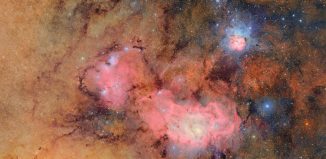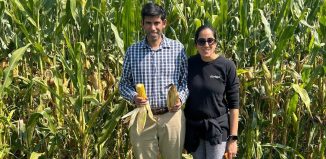BNL’s Heroux helps paint picture of structure
For Annie Heroux, it was love at first sight, at least as far as her career was concerned. During her days of studying at the Universite de Montreal, she took a course in crystallography — the study of the structure of small objects by looking at a crystallized arrangement of their atoms.
Even before the class began, she read the entire book. When she saw the professor, Francois Brisse, she said, “This is what I want to do” in graduate school. And so she did.
“I never planned for it,” she said. “It just happened.”
For her graduate work, Heroux performed crystallography work on polymers like kevlar. Eventually, her interest took her to Brookhaven National Laboratory, where she’s been for the last 13 years.
A beamline scientist, Heroux provides a supporting role to many of the users from around the world who come to BNL to see if they can make a link between the structure of something small that often happens inside a cell and its function.
“It is like knowing the shape of the tiny gears in a watch — OK, an antique watch with gears — and then desiring to know how the gears move each other to count down time, or move a muscle or have a thought,” explained BNL colleague and fellow Beamline Scientist Howard Robinson.
Recently, Heroux worked with Scott Bailey, an associate professor in the Johns Hopkins Bloomberg School of Public Health’s Department of Biochemistry and Molecular Biology. Bailey explored how bacteria were able to recognize and destroy viruses.
Heroux helped provide the first picture of the RNA and DNA of a molecular tool called Cascade, which protects the bacteria.
Cascade, an 11-protein genetic security system that can only function if each part is working correctly, uses short strands of bacterial RNA to scan its DNA to see if the genetic blueprints come from something else that might be trying to corrupt its system. If the RNA recognizes something other than its own code, it breaks down the DNA.
Heroux helped explore more conditions to get better crystals with better diffraction qualities — or ways that light bends.
In this research, which was published in August in the journal Science, Bailey and his collaborators found that the RNA scans the DNA in a way similar to how we look through text for a single word. The Cascade has a template to find its compatible counterpart.
In general, Heroux said her role is to make sure that everything works the way it should at the beamline. She “goes through the steps to figure out all the things that can go wrong during an experiment.”
After she helps with experiments, she returns to “crunch the numbers on the computer.”
While she doesn’t have her own lab or pursue her own research agenda, she does have an opportunity to try to figure out new ways to solve the structure of a molecule in a different way.
Heroux is looking forward to the opportunities presented by the NSLS II, the second generation of synchrotron that will open officially in 2015. The beam, which is 10,000 times brighter than the original, will create new opportunities and new challenges.
“The beamline will be so bright that we will modify the way we do experiments,” she said. The X-rays have the potential to destroy the crystals. The experiments will have to occur at a faster speed and may require more crystals to get a full data set.
Heroux enjoys the process of collaborating with scientists on their projects.
“Most scientists are pretty centered over what they want to do,” she said. “What I find interesting is that, by collaborating with all kinds of different groups, I get to see all kinds of different problems. It’s never the same thing.”
A resident of Shirley, which is only seven minutes from the lab, Heroux lives with her partner, Matt Cowan, a computer expert. Heroux, who is originally from Montreal, met Cowan through her work.
The couple have three children: Viviane Trudel, 21, Florence Trudel, 18 and Ethan Cowan, 10.
Heroux enjoys walking through parks with a mycology club, which searches for and identifies mushrooms. She calls cooking her “big relaxation,” and has tried her hand at Indian and Mexican food. She has also made her own sushi.
As for her work, she still is excited about seeing the structure of objects.“You collect data, which are spots on your detector and, if you’re lucky, a couple of hours later, you see the structure popping up,” she said. “That is always exciting, no matter what the structure is.”






